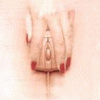
sluggo49
Members-
Posts
170 -
Joined
-
Last visited
-
Days Won
1
sluggo49 last won the day on December 23 2018
sluggo49 had the most liked content!
Reputation
23 NeutralAbout sluggo49
- Birthday 06/29/1949
Previous Fields
-
Other Bikes
old harleys and hondas
Profile Information
-
Gender
Male
-
Location
Morganton,NC
Recent Profile Visitors
1,913 profile views
-
My '98 carbed 'Bird gets somewhere between 35 to 40 mpg. Very little in-town riding and I mostly ride 2 lane twisty asphalt at a moderate pace.
-
Well, I forgot about this thread but I’m happy to report that using the frame for both the ac and dc ground planes works very well. to summarize, the cdi is powered by one coil on the stator (unchanged from stock configuration) and the other stator coil now feeds a shiny regulator/rectifier to provide dc to lights, fan, horn, directional and a little battery. Everything works properly and the battery charges nicely.
-
A fresh set of plugs will often improve starting and running, but like rock said, the iridium (or platinum) was added to reduce the rate of erosion of the electrode. since changing plugs on the ‘bird is a pain, I use platinum coated plugs. On my bikes with more accessible plugs I just get plugs with steel electrodes.
-
Thanks for the response and the effort. The schematic you reference includes an aftermarket or re-wound stator. It is not the stock wiring diagram, but it is useful for folks who buy aftermarket packages to convert the XRR to a dual sport. The stock stator is good for about 80W out of a single winding, which is what I'm using. The aftermarket stators became popular with HID lighting, but I'm running an LED headlight, 2000 Lu at about 18W. Turn signals and tail/brake light are all LED and almost negligible load. Fan draws load is less than 30 W. I don't much care about the horn load. To answer some of your questions: Yes, the LEDs work on AC, and as you imagine, they flicker , particularly at lower RPM. AT higher RPM they become fairly steady, so they appear brighter. On my XRR, I considered just putting a full-wave bridge rectifier that I have lying around downstream from the AC voltage regulator, but the mounting and wiring looked fairly tacky. So I am using a reg/rec from an XR650L that is a spare. It is also a 3 leg AC unit, but I'll just wire my coil to one of the legs. I think the XRL reg/rec is good for somewhere around 150W, so it shouldn't be a problem. As far as bikes from the '60's are concerned, my first was a 305 Superhawk. It ran lights on regulated AC, but they were incandescent. So while they dimmed substantially at lower rpm, they didn't suffer the diode switching effect that LEDs do. Back to the shared ground plane: I'm thinking that there shouldn't be a problem since the voltage sources are isolated from each other. Nothing on the DC side is gonna suffer from an AC ripple, and I believe the DC side of the rec/reg is a pretty high impedence, so there should be no worries there. On the AC circuit that drives the ignition (CDI and coil), the CDI supply peak voltage is somewhere in the 60 to 100V range, so 12VDC should be invisible. I guess I'm most concerned about the ignition pulse generator which has a peak voltage of less than 1 V and shares the frame ground. But I can't see where that would be a problem, either, since using the frame for a DC ground reference should be electrically transparent. I'm in the process of wiring the bike as I build it. It has a few wiring kludges already built in that I'm disentangling, so it may be a few days before I can try out my solution. Any further thoughts would be appreciated.
-
I'm adding a battery for the DC circuit. It's there mostly to absorb the ripple. A large capacitor would do about the same thing.
-
Looks like a great tent. Lots of features and apparently well thought out. At 100" wide in the garage, it should be big enough for anything you'd care to tour on. I like the idea of a large vestibule for hanging out when it's wet. At 14 lbs it's pretty heavy, but that is apparently the price of "features". When my brother and I packed horses through Montana and Wyoming for a summer, we used tarps effectively for dry shelter when required and each had a 2 man dome tent for sleeping. I always figured a similar setup would work for motorcycle touring. But we weren't as weight limited as you would be on a bike since we ponied three pack horses in addition to our riders.
-
Not XX related. I have a bike (XR650R) that has AC lighting and AC to the CDI box. The alternator has separate coils for the two circuits and neither is grounded at the alternator. Each AC circuit is grounded to the frame, though at separate physical points. I am converting the lighting circuit to DC by running the output of the lighting coil through a regulator/rectifier. I intend to use the frame as the DC ground as well as retaining it for AC ground. Anyone tell me why sharing the frame for the two ground planes wouldn't work? There is plenty of advice about this on other forums, but I haven't seen a good explanation from the doubters as to why it won't work. I understand electricity pretty well, so don't hesitate to get technical. For what it's worth, I'll be running LED lighting, horn and fan on DC.
-
"Levered onto the sprockets"?!!! Who would do such a thing? But I guess it could happen. In any case, I reckon the chain coming apart tore up the guides, plugged the oil pickup and starved the crank for oil. I've been into a few Honda engines but I've never seen a chain break like that or chain guides shredded. Could any of you with more experience comment on that? Maybe a really worn chain run for thousands of miles with a tensioner that gave up long ago?
-
I ran an Antigravity for a short time a couple of years ago on a 127" Harley 'cause the lead/acid batteries just didn't have the CCA to provide reliable starting even with compression releases on both cylinders. While I had a little tussle with the battery manufacturer over a defective unit, I will say that the battery spun that engine with ease. I learned a couple of things from that experience, though. First, it pays to measure the key-off draw of the bike. The LiFePo4 batteries provide a lot of cranking power, but they can get pulled down over time more quickly than one might think. With the technology where it was a few years ago, that was supposed to be very, very bad. Second, apparently these batteries don't like the float stage that lead/acid batteries get from modern chargers. However, they can be brought to a full charge on a conventional charger (which is, of course, what happens when they are installed on a motorcycle). Just make sure it's disconnected when the battery is fully charged. Third, these batteries don't like cold. It puts them to sleep, I guess. However, as mentioned earlier in the thread, they can be awakened by just turning on the headlight for about 30 seconds. When I first got my AG battery, I was pretty excited about how light it was, compared to the AGM I had been running, so I weighed both of them: about 15 lbs for the AGM and far less than 2 lbs for the AG. However, it turned out that the AG should have weighed a kilo (they left something out when they assembled it, hence the tussle with the manufacturer). In the end, they sent me a new battery on the condition that I return the defective one, but they never gave me a clear answer about the nature of the defect. I've been pretty shy of AntiGravity ever since, but maybe they've gotten better.
-
Unless you dropped something without realizing it, I guess. But I gotta agree that it doesn't seem likely the top end work would do that tot eh chain. As you look at cam sprockets and the sprocket on the crank are there any indications of something getting lodged under the chain? Just speculation, but it seems to me that something had to get caught between a sprocket tooth and the link plate, forcing the plate to flex out of plane. The flex may have just fatigued that plate and the oscillations from high-rev operation finished the job sometime later. Anyone have other thoughts to contribute, preferably about Tomek's chain instead of his mom?
-
With an inadequate flow and pressure, that bearing didn't require a piece of debris on the land to cause it to seize. I guess I'm most amazed by the can chain failure. Had the chain been making any noise? Did you miss a WFO shift?
-
Wanted , Honda service used manual
sluggo49 replied to Steve Smith's topic in The Sales Floor -- For Sale/Wanted
I got one from ebay. Here's another: https://www.ebay.com/itm/1999-2000-2001-2002-2003-CBR1100XX-Super-Blackbird-Shop-Service-manual/123539333459?hash=item1cc384a153:g:6aAAAOSwiJZcEAVA:rk:6:pf:0 -
I'll start with a distinct ignorance about the internals of these engines: Shredded the cam chain guide, plugged the oil filter and spun the bearing. What's my prize?
-
The stator can't cause a spike. The spike is caused by the series r/r when it interrupts the flow of current from the stator. (Same as when the points open.) All the electrons that are in motion in the stator windings while the circuit has continuity don't come to an abrupt halt when the circuit is opened by the r/r. The result can be a very short duration, high amplitude voltage spike. But as was mentioned earlier, the series r/r designers must have taken that into account when they designed the circuit. I'm just gonna hols off long enough to convince myself they did a good job.
-
I didn't know you guys lived together. How sweet is that?


